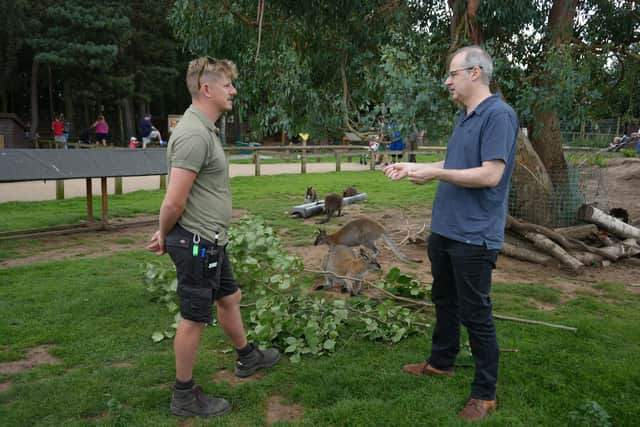How poo from Yorkshire Wildlife Park's animals could save the NHS millions of pounds a year
The team made the breakdown after collecting faecal samples from species, such as Guinea baboons, lemurs and Visayan pigs, at the Yorkshire Wildlife Park, near Doncaster.
They said naturally occurring viruses in the excrement – known as bacteriophage or phages – could be included in dressings applied to untreatable ulcers with further research.
Advertisement
Hide AdAdvertisement
Hide AdThere are thousands of different types of phages, which selectively target and kill bacteria, even in instances when antibiotics do not work. Phage therapy was first discovered in the early 20th century.


Professor Graham Stafford, who led the research team and who is chairman of molecular microbiology at the University of Sheffield, said: “Despite the smell, it turns out that the faecal matter of endangered species could hold the key to killing infectious bacteria that are otherwise resistant to antibiotics.”
He added the team is “working hard” to develop the faecal matter “into viable treatments for patients whose next option is the loss of a toe, foot or leg”.
“Importantly, the treatment could also help reduce costs of about £1bn per year to the NHS,” he added.
Advertisement
Hide AdAdvertisement
Hide AdNHS England estimates around 10 per cent of diabetics will develop a foot ulcer at some point in their lives.
Prof Stafford said his team’s work “is part of a wider drive in UK bioscience to find new antimicrobials to combat the major global challenge of antimicrobial resistance (AMR)”.
AMR, or antibiotic resistance, led to the death of about 1.27 million people across the world in 2019, according to a report by The Lancet.
Last month, the Government announced a £210m investment to fight the issue on a global scale.
Advertisement
Hide AdAdvertisement
Hide AdA report by the World Health Organisation (WHO) in April said its surveillance of antibiotic resistance in the European region, which included data from 2021, showed “high percentages of resistance to last-line antibiotics” in a number of countries.
Prof Stafford said: “We have been searching for new treatments for antibiotic resistance for a while and we are the first to look for such a virus in zoo poo.
“We look forward to the poo pick-up, which the wonderful team at the zoo place in a cool box in a fridge for us.
“It’s a delight that endangered species are contributing to such a positive and powerful purpose. It provides an ever stronger reason to conserve endangered animals.
Advertisement
Hide AdAdvertisement
Hide Ad“The biodiversity they harbour potentially includes new cures for a range of infectious diseases and we believe this is the tip of the iceberg in this area.”
Dr Dinesh Selvarajah, consultant physician at Sheffield Teaching Hospitals NHS Foundation Trust, added: “Unfortunately, I see many patients with diabetic foot disease in my clinic.
“Treating infections more effectively will have a significant impact on lowering the risk of amputations.”